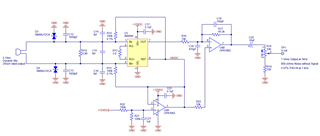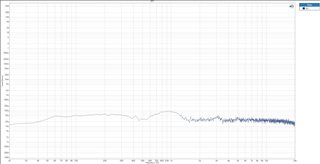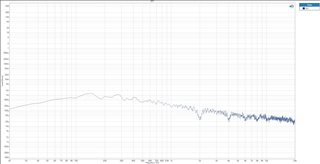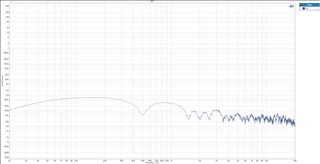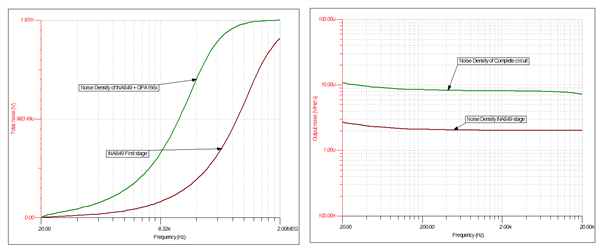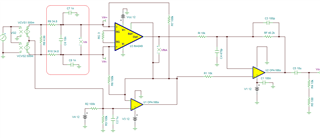Other Parts Discussed in Thread: OPA1662, , INA851, INA163, INA166
Hi,
I am having problems with an INA849 amplifier circuit. The input is intended to interface to an un-amplified dynamic 5 Ohm microphone with a 250uVrms output. For the purpose of measuring the performance of the amplifier I'm using an Audio Precision generator with a 40 Ohm balanced output. The rated output of the entire circuit is 1.0 Vrms and the noise measured without signal is 800uV (-62 dB). The noise contribution is the before and after the OPA1662. When the INA849 is powered down the noise floor is -115 dB from 1 Vrms. Is there anything that stands out that may be a contributor to the noise? I have an FFT snapshot of the noise floor and is relatively flat without any dominant frequency spurs but occasionally the whole noise floor rises then settles back down. Any help help would be greatly appreciated as I am considering to switch to a completely different amplifier, possibly a precision op-amp. I am open to any suggestions. Thanks, Steve K.
